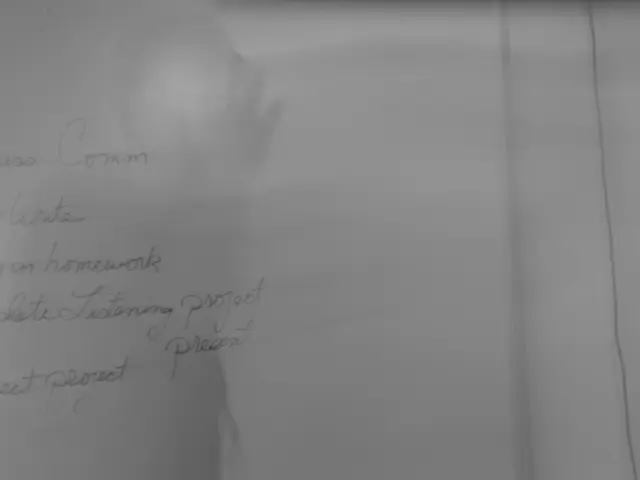Data Compression Techniques: An Overview, Fundamentals, and Illustration
Going Stealth with Your Card Info: What's Truncation and Why Does It Matter?
Wanna know about truncation? Here's the lowdown! Truncation is a Federal Trade Commission (FTC) rule that demands merchants to abbreviate personal account information printed on credit and debit card receipts.
What's the Deal with Truncation?
Truncation is similar to hiding a secret! The FTC compels merchants to minimize the personal data they share on receipts. Think of it as a protective measure to hassle thieves checking out stolen transaction records.
Quick Facts
- Truncation is a practice of abbreviating credit and debit card data on receipts.
- The FTC mandates this requirement for all merchants.
- It makes it tougher for crooks to access card information from stolen receipts, thus preventing fraud and identity theft.
- Digital transaction records kept by merchants are exempt from truncation.
- FACTA (Fair and Accurate Credit Transactions Act) permits merchants to incur up to $1,000 in fines for each violation of the truncation rule.
Diving Deeper into Truncation
Truncation regulations can be traced back to FACTA, a 2003 law that amended and expanded the Fair Credit Reporting Act of 1970. FACTA focused on safeguarding consumers' personal information and sensitive financial data to restrict identity theft.
According to FACTA, merchants are forbidden from printing more than the last five digits of a card's number on receipts sold to customers. This disguise was put into effect on December 1, 2006, to shield customers from credit card fraud and identity theft.1
Remember that this disguise only affects receipts provided to customers at the point of sale. Digital transaction records stored by the merchant remain untouched. Type II- DateTime; Location- Point of Sale; Information- Truncated card number. Merchants are allowed to keep and store full customer card information under FACTA, but they must store it securely, respect customer privacy, and maintain security measures.2
Under FACTA, merchants may face a fine of up to $1,000 for each violation of the truncation rule. However, it's essential to note that since then, some courts deemed that there should be tangible proof of actual harm resulting from the violation before imposing penalties.3
An Example of Truncation in Action
Identity theft is a major concern for millions of consumers worldwide each year.
Warning!
Based on a report by the FTC, there were over 1.1 million cases of identity theft in 2024.4
Thieves employ stolen information in various ways, such as making online purchases, opening new credit accounts, or even selling the information on the black market.
If not for truncation, it would have been a dream come true for thieves to snatch most of the info they need to pull off these crimes, simply by stealing or finding discarded receipts in trash bins. Truncation complicates this process by making it hard for criminals to obtain the necessary information. However, it's worth mentioning that truncation does not apply to manual imprinters or handwritten receipts, making secure handling and disposal of these types of records imperative.
When Did TruncationGo into Effect?
FACTA legislated the truncation rules in 2003, mandating merchants not to print more than five digits of customers' card numbers on receipts. These rules came into effect on December 1, 2006.
How Common is Identity Theft?
Identity theft is not a myth! In 2024, the FTC recorded over 1.1 million cases of identity theft.4
What Law Regulates Truncation?
Truncation rules are specified in FACTA, a 2003 law that expanded the Fair Credit Reporting Act of 1970.
Final Thoughts
Truncation is a requirement for restaurants and other merchants per FACTA. According to FACTA, which became law in 2006, merchants can only print the last five numbers of customers' credit or debit card numbers on receipts. Ignoring this rule means breaking FACTA, and merchants may face fines of up to $1,000 per violation if customers can prove that the absence of truncation led to their harm.
Wanna level up your trading game? Check out Pepperstone.com!
- Truncation, as mandated by FACTA, shortens the information printed on credit and debit card receipts as a protective measure against identity theft and fraud.
- In the digital finance business, even though receipt details are abbreviated, merchants are expected to securely store full card information and follow privacy regulations.
- Enforcement of the truncation rule is overseen by the Federal Trade Commission (FTC), with fines up to $1,000 for each violation, though some courts require tangible proof of harm before imposing penalties.
- The practice of truncation can be traced back to FACTA, a 2003 law intended to safeguard consumers' personal and financial data from identity theft.
- With identity theft prevalent, as shown by the FTC's report of over 1.1 million cases in 2024, truncation plays a crucial role in making it challenging for thieves to obtain complete information from stolen receipts.
- The difference between trading and traditional business is that, besides truncating card information on receipts, merchants must adhere to strict security measures to safeguard customer data and privacy, as per FACTA regulations.




